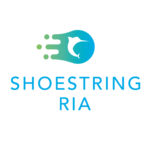

Accounting 101 For Your Business
February 02, 2022 | RIA Resources

Your independent RIA is up and running, the word is out, and clients are calling. But there’s a lot of work ahead as a business owner, and you’ll need to continue managing your firm effectively to be successful.
The next few blogs in this series will cover more of the important parts of running an RIA, from banking to selecting a custodian to the best industry associations to join. Most advisors have little experience in business management, so these articles can be a boon in bringing your firm up to speed quickly.
The topic we’re covering in this article is one of the most important: managing your firm’s finances. While you’re already in the business of managing people’s money, managing your own business’s finances is likely something you haven’t done. We’ll walk you through setting up your books the right way.
QuickBooks
The first thing we recommend is to sign up for QuickBooks Online. QuickBooks is the most popular bookkeeping software for small RIAs who need to manage business income and expenses while also allowing easy monitoring of your businesses’ overall financial health.
There are two versions available: desktop (locally-installed) Quickbooks Pro Plus or web-based QuickBooks Online. We recommend the latter since the online version can be used on any computer, while the desktop version is only accessible from the computer it’s installed on. Also, the desktop version costs $349 annually versus online only $150.
Another recommendation is to sign up for a bill-paying and invoicing service, such as Bill.com (which has a QuickBooks plugin) and BillFin, which will make calculating your client invoices and payment process all but automatic.
Bill.com includes valuable features like international payments, a mobile app, and detailed transaction records. BillFin goes a step further by offering a host of functionality that small RIAs will find useful, such as automatic calculation of advisory fees, payment file generation, customizable invoices, and self-service onboarding.
QuickBooks does have a bill pay system of its own but offers only basic capabilities, and Bill.com does offer invoicing. But neither are fully featured enough for an RIA. We recommend using both: Bill.com to pay your bills, and BillFin to handle your client invoicing.
Chart of Accounts
The first step we recommend doing in QuickBooks is setting up your Chart of Accounts. While the name makes you think that it’s merely your bank accounts, in QuickBooks, an account can also be a category. While QuickBooks will include your bank accounts in your CoA, you’ll also see others, like Payroll Expenses, Meals & Entertainment, and so on.
These accounts are used to categorize your income and expenses, which allows you to more accurately understand where your money is coming from and where it’s going. There are five main categories of accounts: assets, liabilities, equity, revenue, and expenses.
| A Basic Chart of Accounts | |
| Balance Sheet Categories | Income Statement Categories |
| Assets
Liabilities Equity |
Income
Expenses |
| Assets = Liabilities + Equity | Income – Expenses = Profit/Loss |
The first three are called “balance sheet categories.” The balance sheet is a report that shows you a financial snapshot of the business. Assets include things you possess, such as cash in the bank or physical property like office equipment.
Liabilities are things you owe, like vendors or employees (payroll), while equity is things you possess. Adding liabilities and equity together should equal your assets, “balancing” your books.
The last two categories are called income statement categories. Where the balance sheet is your firm’s financial picture at a given point in time, the income statement is an accounting of activity between two points in time. As a result, it can either be a positive number (profit), a negative number (loss), or zero (break-even).
Both reports will be crucial to monitoring your business’ overall financial health. But to make these reports useful, you’ll need to add some subcategories.
What your Chart of Accounts Should Look Like
QuickBooks will provide you with a few default accounts, but for an RIA, you’re going to need to add additional accounts to track everything appropriately. Some of these accounts are similar to some of the default accounts that QuickBooks provides: you can rename them to your liking or create new ones.
Here’s what we suggest you use as a start for your Chart of Accounts:
- Income Subcategories: Planning service fees, product sales, speaking fees, asset management fees
- Expense Subcategories: Supplies, insurance, marketing, payroll, license and registration fees, conferences, travel, membership dues, meals and entertainment, office rent/lease, software vendors, depreciation, utilities
- Asset Subcategories: Cash, accounts receivable, office equipment, business bank account, real estate
- Liability Subcategories: Accounts payable, unearned income, wages payable, payroll taxes payable, credit cards
- Equity subcategories: Owner’s contributions, owner’s withdrawals, retained earnings.
Of course, this is by no means a complete list. As your firm grows, you’ll likely need to set up other accounts: you might also not need some of these accounts and can skip them. But if you’re lost as to where to start or your future goals for your firm, start here.
Summary
We recommend choosing QuickBooks for your bookkeeping software as it’s relatively easy to use (especially the online version), and most will be able to manage their books on their own, at least early on. It’s also a good idea at this point to retain an accountant to help keep your books accurate throughout the year, which will save you tons of time during tax season.
The Shoestring RIA is a series of articles written and published by the BillFinTM team at Redi2 Technologies designed to help RIAs as they start out on their own. We recognize just how challenging it is to venture out and build a successful business. Our articles will be focused on helping these new businesses with a wide range of topics.
